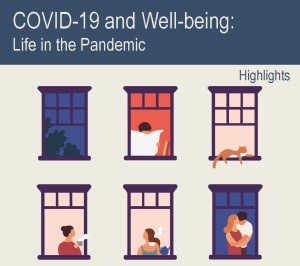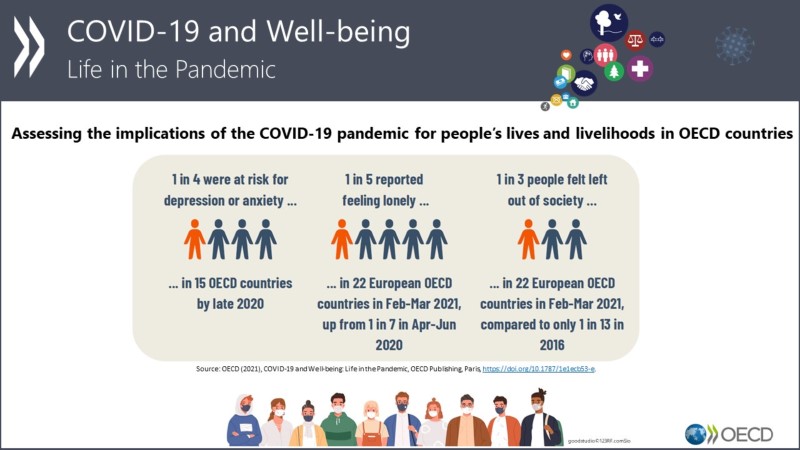Health

COVID-19 and Well-being
Life in the Pandemic
COVID-19 and Well-being: Life in the Pandemic explores the immediate implications
of the pandemic for people’s lives and livelihoods in OECD countries. The report charts
the course of well-being – from jobs and incomes through to social connections, health,
work-life balance, safety and more – using data collected during the first 12-15 months
of the pandemic. It also takes stock of what has happened to human, economic, social
and natural capital that, beyond their effects on people’s lives today, shape living
conditions for years to come. It shows how COVID-19 has had far-reaching consequences
for how we live, work and connect with one another, and how experiences of the pandemic
varied widely, depending on whether and where people work, their gender, age, race
and ethnicity, education and income levels. The report also examines the role that
well-being evidence can play in supporting governments’ pandemic recovery efforts.
It argues that a well-being lens can prompt policy-makers to refocus on the outcomes
that matter the most to people, to redesign policy content from a more multidimensional
perspective, to realign policy practice across government silos, and to reconnect
people with the public institutions that serve them.
Published on November 25, 2021Also available in: French
TABLE OF CONTENTS
| Foreword | |
| Reader’s guide | |
| Abbreviations and acronyms | |
| Executive summary | |
| Building back better lives: Using a well-being lens to refocus, redesign, realign and reconnect | |
| Material conditions in the first year of COVID-19 | |
| Quality of life in the first year of COVID-19 | |
| Community relations in the first year of COVID-19 | |
| Inclusion, material conditions and COVID-19 | |
| Inclusion, quality of life and COVID‑19 | |
| Inclusion, community relations and COVID-19 | |
| Economic capital and COVID-19 | |
| Human capital and COVID-19 | |
| Social capital and COVID-19 | |
| Natural capital and COVID-19 |
Powered by OECD iLibrary

